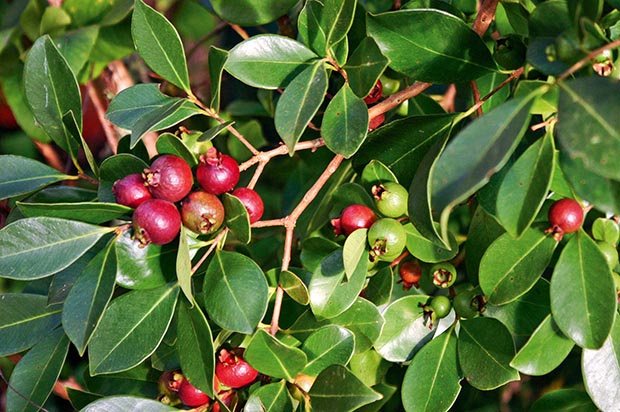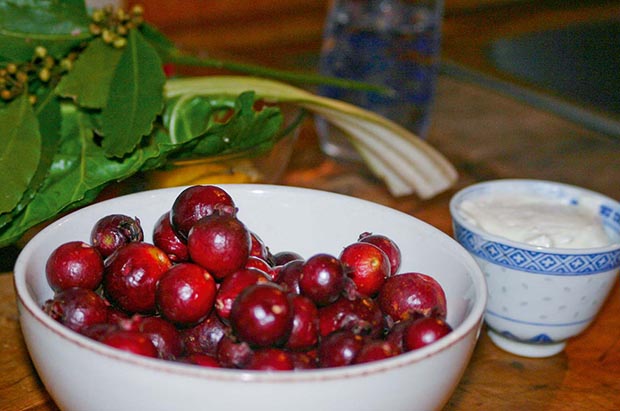Guava growing in New Zealand: Everything you need to know

Like all the guavas, these ones like a constant heavy mulch to feed the roots, and a good supply of moisture.
Words: Ben Gaia
Warning: strawberry guava (Psidium cattleianum) is now deemed a weed in the Auckland region. To protect the environment, you:
– are not allowed to breed, distribute, release or sell guava within the Auckland region.
– are not allowed to plant guava within the Auckland region, unless you are transferring an existing plant on your land to another location within the boundaries of the same property.
– must destroy any guava on land that you occupy if it has been planted in breach of the above rules and you are directed to do so by an authorised person.
Guavas are fruiting myrtles from South America, so they do well in our southern climes. Feijoas (also known as pineapple guavas) and “NZ cranberries” (Chilean guavas) are surprisingly hardy to cool winds and salt air, but generally dislike cold or dry weather. The large yellow guavas that thrive in South Africa are not grown here, but one that will and that approaches its superb tropical flavor is the strawberry guava (Psidium cattleianum).
Like all the guavas, these ones like a constant heavy mulch to feed the roots, and a good supply of moisture. Having said that, this plant won the 2013 “drought resistant subtropical” prize in my orchard after a summer that was so dry it killed off citrus trees and my big tamarillo. The strawberry guava is a healthy small tree, but prone to fungus and black mould if left untidied. You have to pick off any mouldy fruits and funny leaves. For ease of picking and ripening, I cut mine off when it’s about 1.5 metres tall or it gets too unruly for my 2.5m-high tunnel house. A heavy annual trim of leggy branches seems to help it too.
It took 10 years for this tree to start fruiting in my cool climate but with attention, good plant hygiene and feeding, the fruit have grown bigger and more profuse each year. It is self-pollinating if bees are let in, and the snow-white flowers fill the autumn tunnel house with a delicate scent. Fruit comes in winter between the pipfruit and citrus. They ripen fast and need to be eaten as soon as the pink fruit turn dark. A daily pick adds a few goodies for your fresh fruit salad or dry fruit leathers.
PROTECTION
The attractive shiny green leaves and dark pink guava-flavoured fruits of this Brazilian coastal bush make it a lovely addition to your frost-free northern garden or tunnel house. Because it fruits in winter like many subtropicals, it will need protection from frost anywhere south of the Bombay Hills.

Strawberry guavas and yoghurt.
EATING TIPS
The seeds are not a big problem when you’re eating and can be easily dealt with in two ways. Either prepare by slicing around the fruit, and throw the seeds in your bin that goes to the tip (not your compost) or invest in an antique spittoon and amuse your guests with some innovative “guava etiquette”. When cutting up the fruit to serve in a fruit salad with kiwifruit, feijoas and tamarilloes, add lemon juice and sugar to offset the sweet tropical flavours, or slice around the fruits outside the seeds and drop the slithers into fresh Greek yoghurt. Mmmm. Just call me Nigella.
WARNING FOR NORTHERN GARDENERS
The nearer you get to the tropics, the more strawberry guava thrives. In Hawaii, it has become a major weed problem in their native bush, largely because of its hard small seeds that are spread about by wild pigs. Those of you in cool areas won’t need to worry, but it’s now an official pest plant in warmer regions.
 This article first appeared in NZ Lifestyle Block Magazine.
This article first appeared in NZ Lifestyle Block Magazine.
